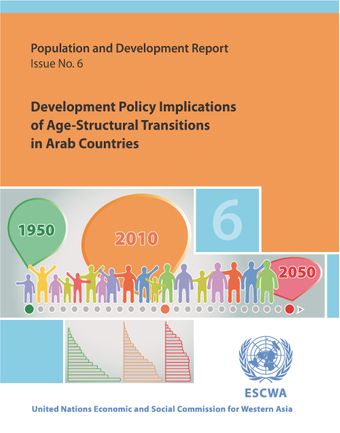Macroeconomic policy implications of age-structural transitions in Arab countries

- Author: United Nations
- Main Title: Population and development report , pp 17-35
- Publication Date: September 2014
- DOI: https://doi.org/10.18356/dd30b182-en
- Language: English
As discussed in chapter I, the age structure of the Arab region is changing, with an increasing share of the population at working age. This phenomenon has a wide range of macroeconomic implications, and creates challenges in terms of unemployment, income disparity, poverty, public expenditure, migration, human capital creation, and housing. However, with the proper macroeconomic policies, the shift in age structure could generate higher per capita income growth leading to better economic performance and better-functioning markets and institutions. Governments therefore need to consider age-structural factors when developing their economic policies to ensure that they are realistic. Moreover, economic policies also affect the ability of countries to benefit from age-structural transitions. For example, people are more likely to save and invest if there are viable, trustworthy and well-regulated financial institutions. Likewise, a lack of State investment in health and education prevents the formation of human capital that is needed to maximize the benefit of age-structural transitions.
© United Nations
ISBN (PDF):
9789210564243
Book DOI:
https://doi.org/10.18356/ef6f6d46-en
Related Subject(s):
Population and Demography
Sustainable Development Goals:
-
From This Site
/content/books/9789210564243c005dcterms_title,dcterms_subject,pub_keyword-contentType:Journal -contentType:Contributor -contentType:Concept -contentType:Institution105
/content/books/9789210564243c005
dcterms_title,dcterms_subject,pub_keyword
-contentType:Journal -contentType:Contributor -contentType:Concept -contentType:Institution
10
5



